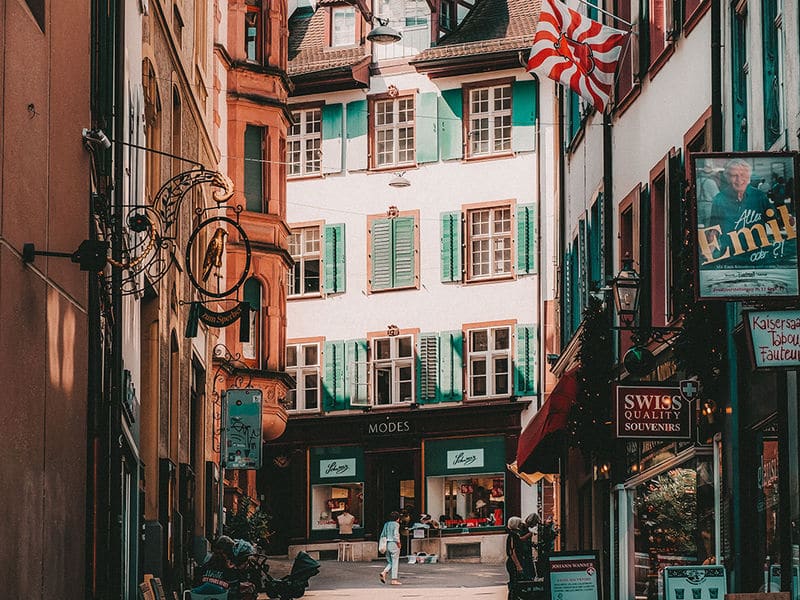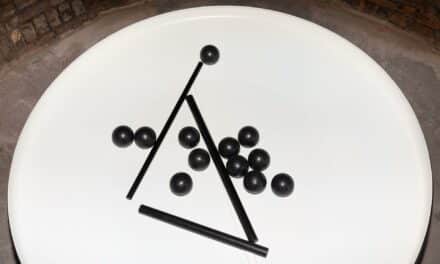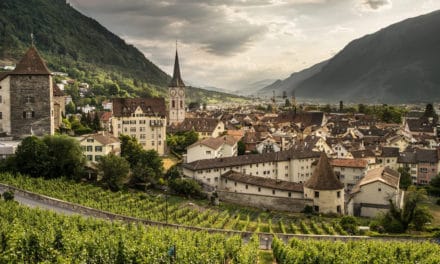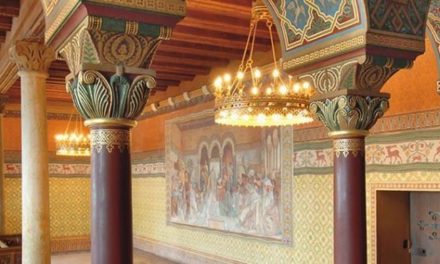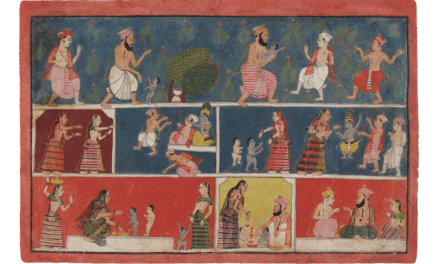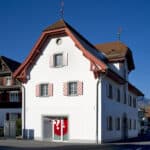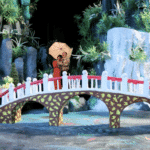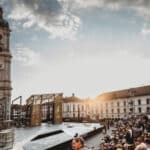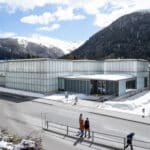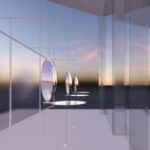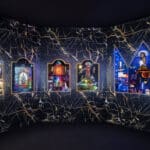Basel can look back on more than 2000 years of history. And it is still present today. It lives on in every nook and cranny of the city in an exciting contrast to modernity. The heart of the city beats in Basel's well-preserved, romantic Old Town: the narrow alleyways and hidden squares with over 300 fountains are just as much a part of it as the many centuries-old buildings and eye-catchers such as the town hall and Basel Cathedral. Here are a few highlights:
Basel Old Town
Take a stroll through Basel's Old Town, one of the most intact and beautiful in Europe, and be amazed by its unparalleled architectural diversity.
Buildings from the 15th century can be found on every corner, as well as those by contemporary, internationally renowned architects. Thanks to its manageable size, the city is ideal for exploring on foot. You will discover that although this rather unusual combination of tradition and modernity creates excitement, the cityscape itself is harmonious. Five tours of the old town, marked with blue signs, offer a good opportunity to discover the city on foot. Our brochure "On the trail of history" is available for this purpose and can be obtained from the tourist information offices of Basel Tourismus.
Basel Minster
Alongside the Middle Bridge, the cathedral is probably Basel's best-known landmark. With its red sandstone, colorful bricks and two slender towers, it is hard to imagine the city's skyline without it.
Visit the former bishop's church, which was built between 1019 and 1500 in Romanesque and Gothic styles. The crypt, the choir, the tomb of Erasmus of Rotterdam, the Gallus Gate and the two cloisters bear witness to an eventful building history over several centuries. Today, the square around the cathedral is a meeting place and is often used for events. And the Pfalz, as the terrace overlooking the Rhine is known, is one of the city's most popular vantage points.
The market square
When you enter the market square, the first thing that catches your eye is the colorful town hall. But this place also plays an important role in the everyday life of the people of Basel: the market, which takes place every day of the week, offers a nice addition to the food stores in the city center. Connoisseurs will find many delicacies and specialties from the region, Switzerland and all over the world.
Few monuments have become such a symbol of the city of Basel as the Mittlere Brücke. It was opened in 1226 and is one of the oldest Rhine crossings between Lake Constance and the North Sea.
The Middle Bridge
The bridge was initially used more for local traffic, but in the 14th century, when the road over the Gotthard Pass gained international importance, it became an important Rhine crossing for long-distance trade. After the introduction of the electric tramway, the old bridge had to make way for today's Middle Bridge, built in 1905. However, a copy of the old bridge chapel, the so-called Käppelijoch, where death sentences were carried out in the Middle Ages, is still a reminder of the original structure.
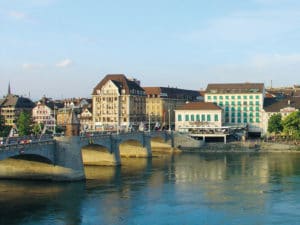
Middle Bridge © Basel Tourismus
The Basel Palatinate
The Basel Palatinate offers a magnificent view over the Old Town and far into the border triangle.
The word "Pfalz" is derived from the Latin word palatium, meaning palace. The terrace high above the Rhine behind the cathedral is so named because the bishop's residence was once located in the immediate vicinity. From the viewing terrace, a staircase on one side leads down to the Münster ferry landing stage. On the other side, a narrow gate leads into the quiet cloister of the cathedral. Here you will find many richly decorated tombstones of members of well-known Basel families from the period between the 16th and 19th centuries.
The town hall
A visit to the town hall is particularly worthwhile for the council chambers, the beautiful inner courtyard, the romantic arcades and the tower. It was built after the great earthquake to replace the former seat of government. After Basel joined the Swiss Confederation, the front building was replaced by a representative new building. The coats of arms of the 12 members with which the canton formed the Confederation at the time were attached to the battlements. At the beginning of the 17th century, the town hall was extended and the artist Hans Bock decorated its façade with painted mock architecture. In 1900, another extension was added with the wing on the far left and the tower on the right.
The Spalentor
The Spalentor is the most magnificent and imposing of the three city gates that have survived from the great city fortifications of 1400.
In earlier times, many important supplies from Alsace entered the city through this gate. With its square main tower and round flanking towers at the outward corners, it can be seen from afar. The outer façade is also adorned with three 15th century sculptures of a Madonna and two prophets.
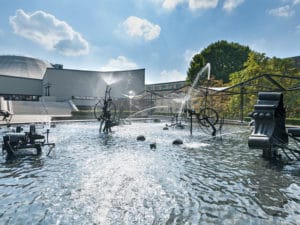
Tinguely Fountain © Basel Tourismus
Tinguely Fountain
Where the stage of the old municipal theater once stood, Jean Tinguely placed playful machine sculptures in a water basin in 1977, giving Basel a new landmark.
The Swiss artist had a shallow fountain basin filled with black asphalt in order to place water-spouting figures powered by low voltage electricity. These ten iron eminences are in constant motion and in conversation with each other, just like the mimes, actors and dancers who once performed in this very spot.

